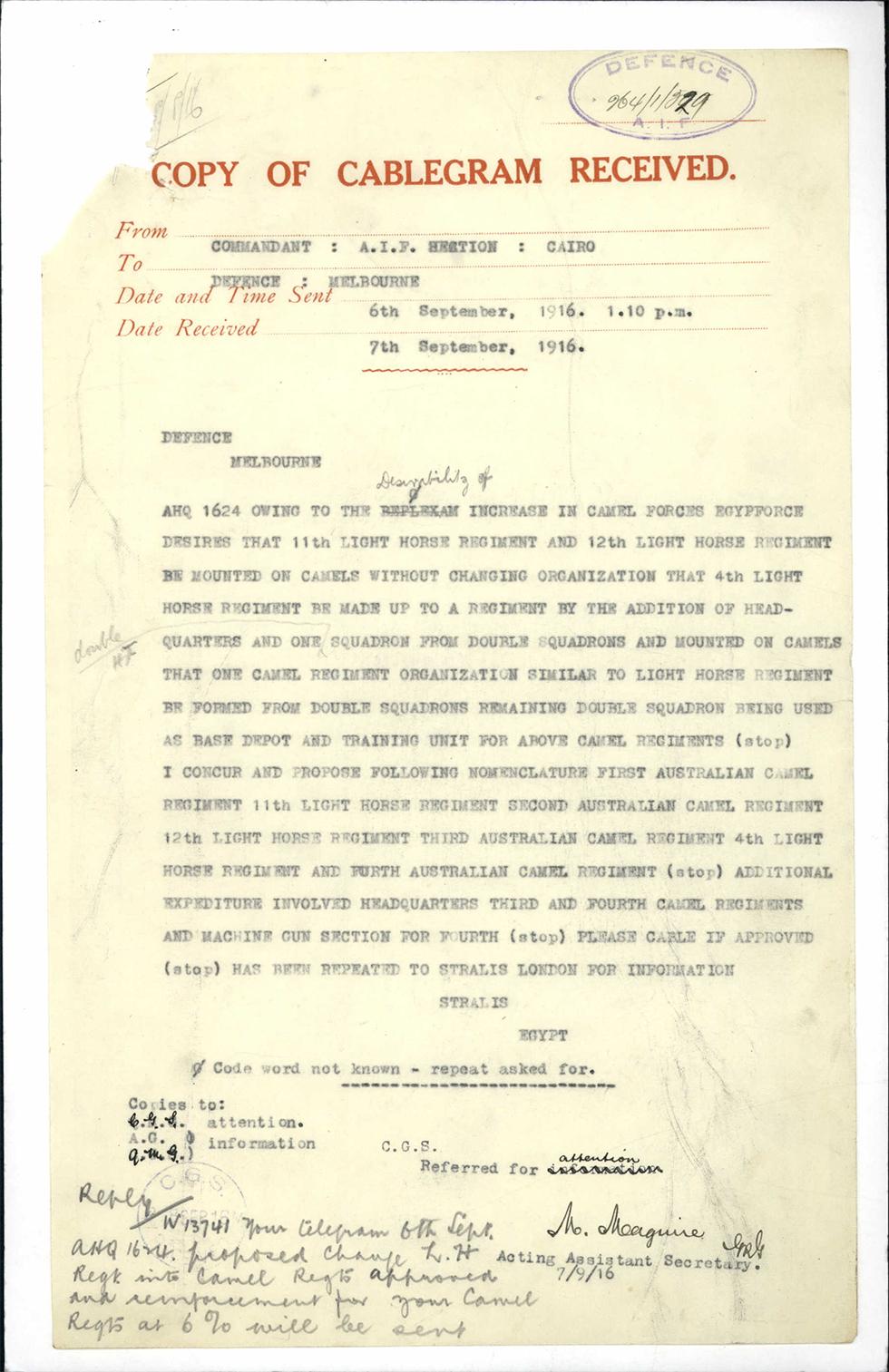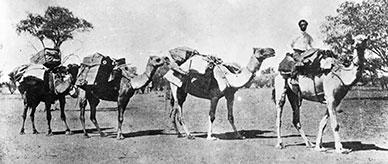


About this record
This is a copy of a message sent on 6 September 1916 from the Australian Imperial Force (AIF) command in Cairo, Egypt, to the Department of Defence in Melbourne. The message seeks approval for an increase in the number of Australian troops using camels, and suggests the formation of four new camel regiments. It proposes to achieve this increase by switching existing members of several Australian Light Horse regiments from horses to camels. The message suggests names for the new camel regiments and notes that the proposal will require additional expenditure. A handwritten note at the bottom of the page indicates that approval was given.
Educational value
- Camels were considered preferable to horses in the desert because they could carry heavy loads and last up to five days without water. Although slower than horses, camels covered, on average, 4.8 kilometres an hour and were known for staying calm under fire. They were generally used to transport troops to areas of conflict—rather than during the actual fighting, when the soldiers would dismount.
- The Imperial Camel Corps (ICC) was formed in January 1916 to support Allied efforts in the Middle East during World War I. The first four companies were made up of men recruited from Australian infantry battalions. Eventually, four camel battalions were formed. The 1st and 3rd were Australian, the 2nd was British, and the 4th was a mix of Australians and New Zealanders. The ICC served alongside the Australian Light Horse and saw action in Egypt, Sinai and Palestine, before being largely disbanded in June 1918.
- The ICC had a mixed reputation, partly owing to the presence of the Australians in its first four companies. When Australian men were needed to form the ICC, their commanding officers reportedly offloaded troublesome soldiers (many of whom had served on Gallipoli). However, the corps grew and initially achieved several successes, first against the pro-Turkish Senussi fighters in Egypt. As a result, its reputation as an effective and resourceful team grew.
- At its peak, the ICC required nearly 4,000 camels. They were obtained from India and Egypt and they remained in the Middle East after the First World War ended.
- Throughout the ICC campaign in the Middle East, 200 men died (66 of whom were Australian), and 598 were wounded.
Related themes
Need help with your research?
Learn how to interpret primary sources, use our collection and more.


